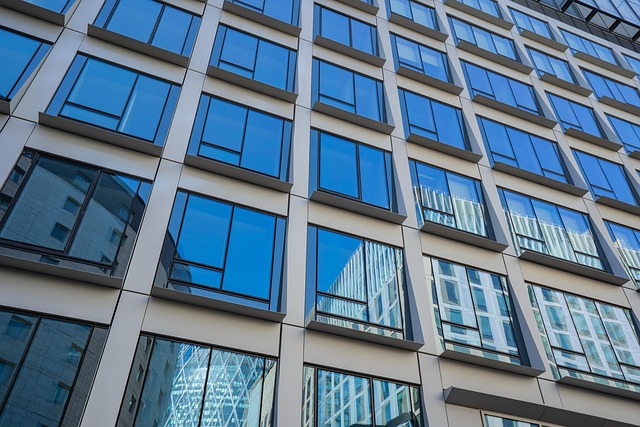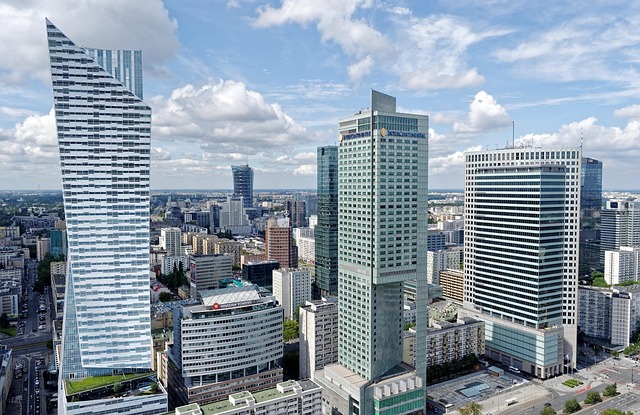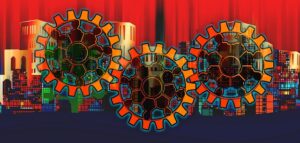Industrial destratification fans are essential for maintaining optimal air quality in large spaces like manufacturing plants and warehouses, addressing temperature variations, and enhancing worker comfort. Integrating airflow sensors into these fans provides real-time data for precise tuning of fan speed and direction, leading to reduced energy costs and improved efficiency. Best practices involve strategically placing sensors to measure temperature and pressure gradients, enabling seamless integration with control systems for real-time analysis and adjustments. This results in enhanced operational efficiency, improved worker comfort, and reduced environmental impact, especially in heavy duty construction settings.
In the realm of industrial ventilation, industrial destratification fans play a pivotal role in maintaining optimal air quality. These specialized fans are designed to disperse and mix air effectively, ensuring even distribution and enhancing environmental comfort. With the integration of airflow sensors, these fans undergo a transformative process, becoming highly adaptive and efficient. This article explores how integrated airflow sensors empower destratification fans to optimize performance, leading to enhanced energy efficiency and improved workplace conditions.
- Understanding Industrial Destratification Fans and Their Role in Air Quality Control
- The Benefits of Integrating Airflow Sensors for Efficient Fan Optimization
- Best Practices for Implementing Integrated Airflow Sensors in Various Industrial Applications
Understanding Industrial Destratification Fans and Their Role in Air Quality Control

Industrial destratification fans are specialized devices designed to combat thermal stratification in large spaces. These fans play a pivotal role in maintaining optimal air quality within industrial facilities, manufacturing plants, and warehouse applications. By promoting efficient air circulation, they help in addressing issues related to high ceiling spaces, where hot air tends to rise and create uncomfortable temperature variations.
In many cases, especially in heavy duty construction sites or large factories, effective cooling is crucial not only for maintaining worker comfort but also for enhancing productivity and ensuring safety standards. Destratification fans are particularly useful in these scenarios as they can significantly reduce energy costs associated with traditional heating and cooling systems. The strategic use of these fans helps in minimizing thermal stratification control challenges, contributing to a more productive and comfortable working environment across various industrial applications.
The Benefits of Integrating Airflow Sensors for Efficient Fan Optimization

Integrating airflow sensors into industrial destratification fans offers significant advantages for optimizing fan performance and overall system efficiency. These advanced sensors provide real-time data on air movement, temperature distribution, and other critical factors within large spaces like manufacturing plants and warehouses. By understanding these dynamics, facility managers can precisely tune fan speed and direction to address specific thermal stratification challenges.
This sensor-driven approach leads to notable improvements in energy cost reduction and worker comfort improvement. In high-ceiling spaces found in heavy duty construction sites or factories, efficient air circulation is crucial for maintaining a productive and safe environment. The sensors enable intelligent control of destratification fans, ensuring optimal performance tailored to the unique needs of different industrial applications, thereby enhancing overall operational efficiency.
Best Practices for Implementing Integrated Airflow Sensors in Various Industrial Applications

When implementing integrated airflow sensors in industrial destratification fans, several best practices ensure optimal performance and significant benefits across various applications. Firstly, locate sensors strategically within high ceiling spaces to accurately measure temperature and pressure gradients associated with thermal stratification control. This is particularly crucial in manufacturing plants and warehouses, where large space air circulation is essential for maintaining worker comfort and efficient factory cooling.
Secondly, integrate these sensors seamlessly into the control systems of industrial destratification fans, allowing real-time data analysis. Such integration enables precise adjustments to fan speed and direction, directly contributing to energy cost reduction. This is especially beneficial in heavy duty construction settings where excessive heat can impede productivity. By adopting these practices, industrial facilities can achieve not only enhanced operational efficiency but also improved worker comfort and reduced environmental impact.
Industrial destratification fans with integrated airflow sensors represent a significant advancement in optimizing air quality control. By combining precise airflow measurement and fan management, these innovative solutions enhance energy efficiency, reduce operational costs, and ensure optimal environmental conditions across diverse industrial applications. Embracing this technology is not just a step towards sustainability but also a strategic move to create safer, more productive work environments.






